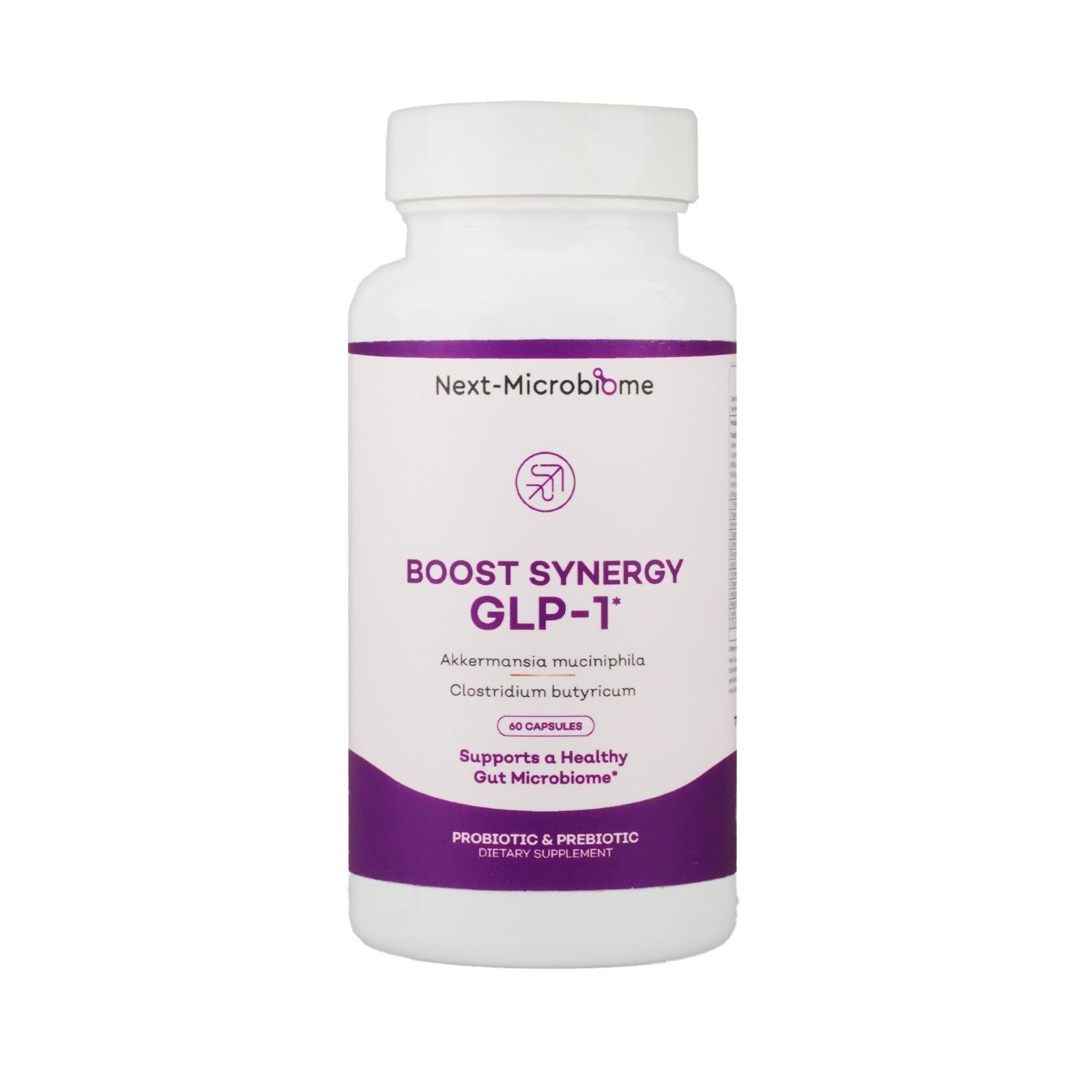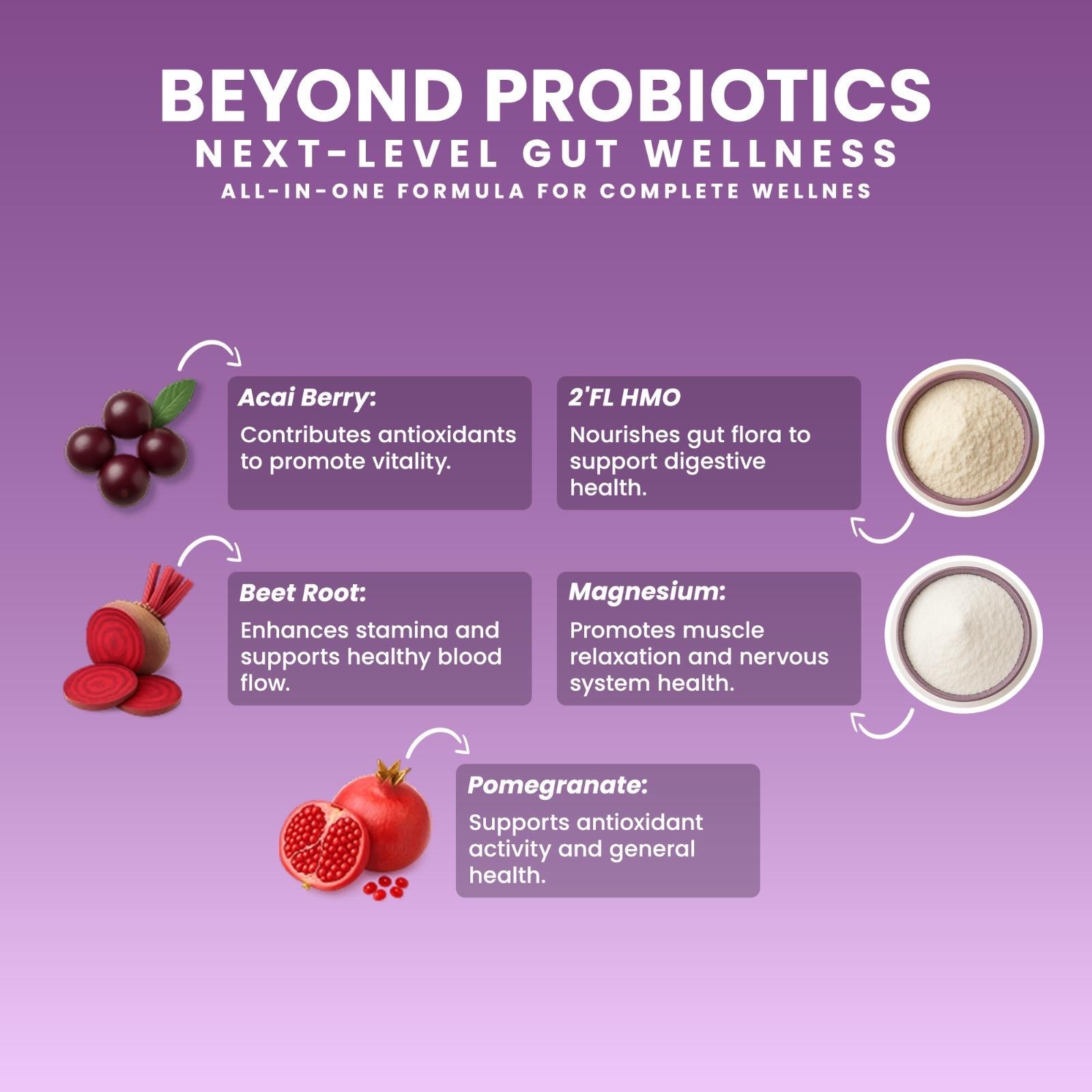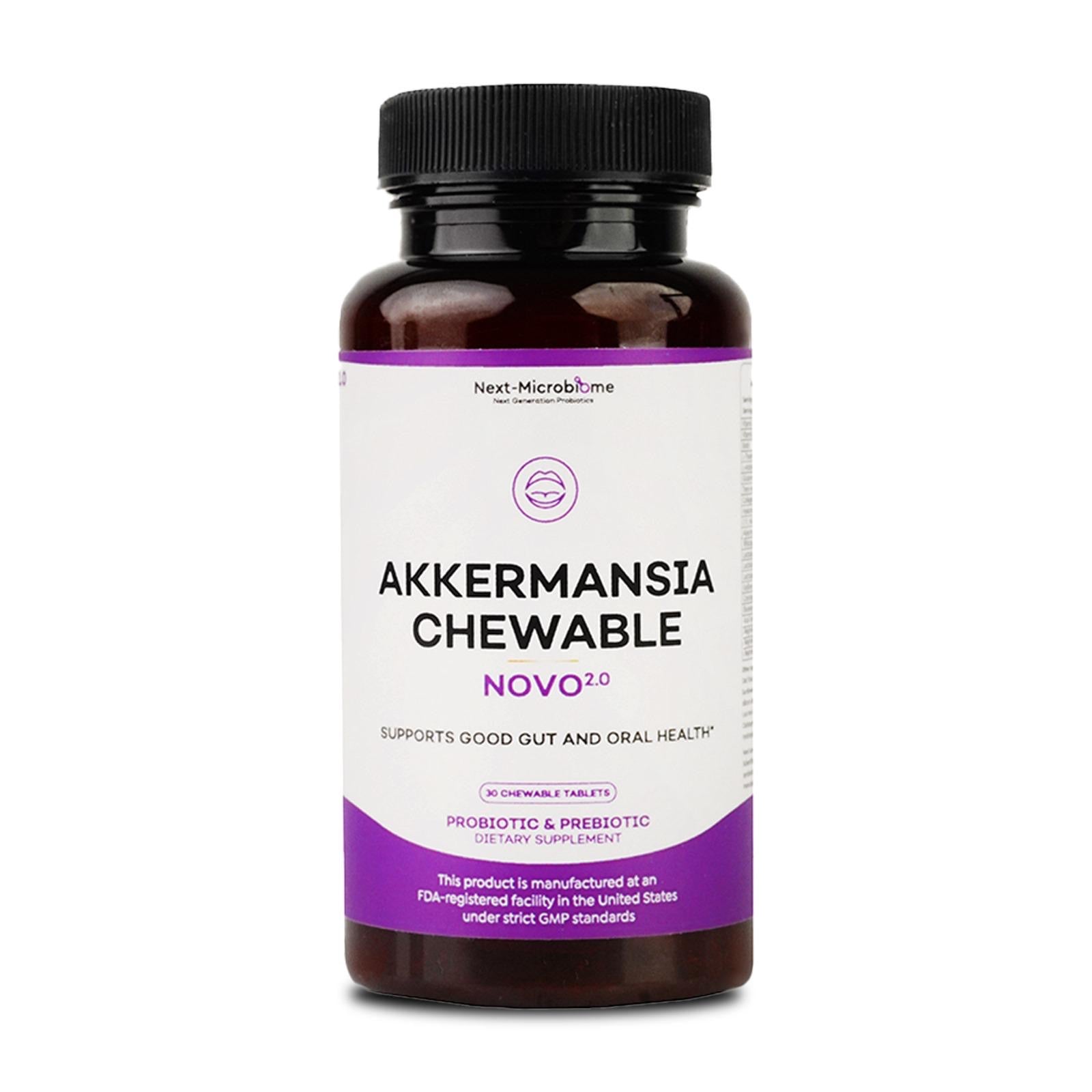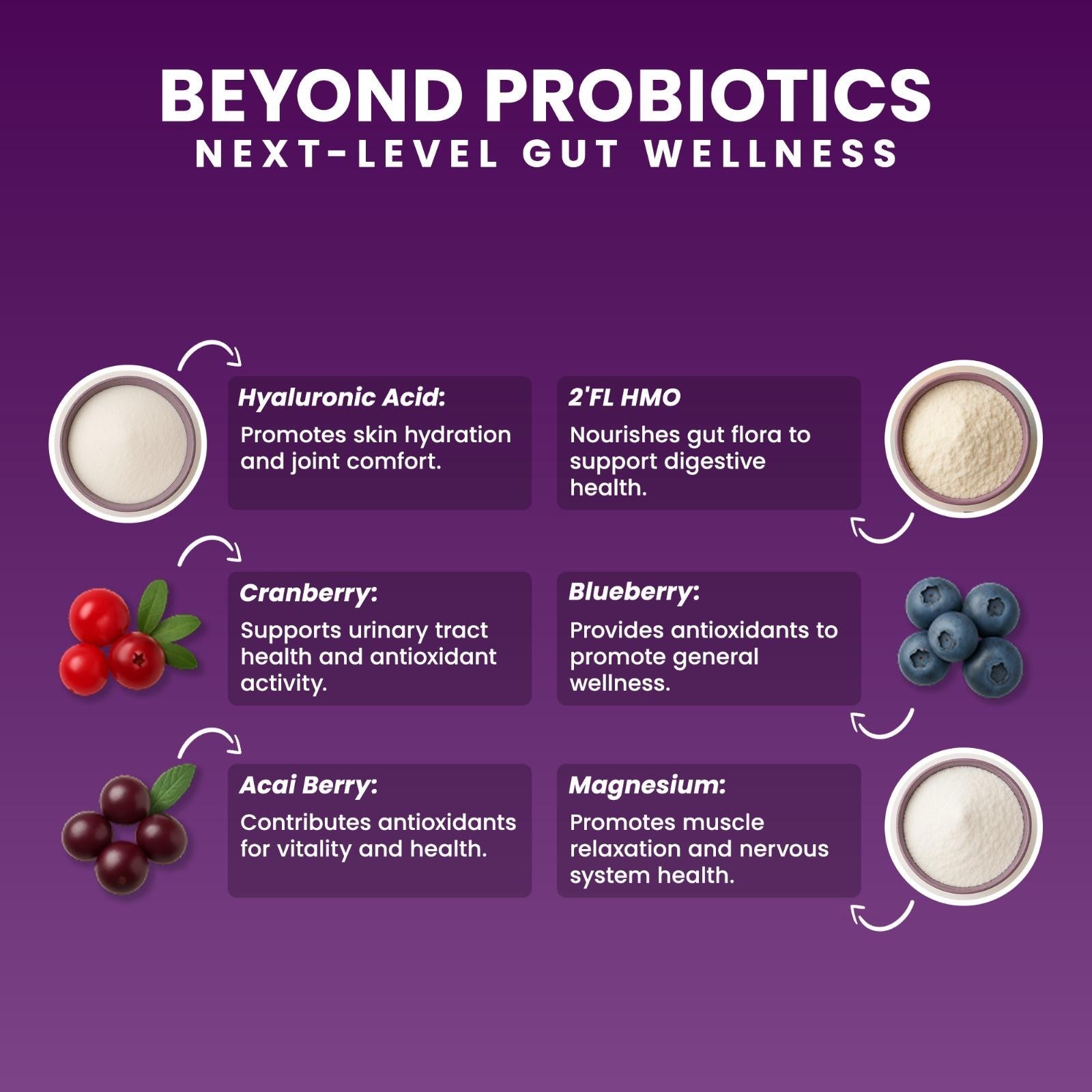
The Next-Generation Probiotics for Kids’ Gut, Immune, and Brain Health
Akkermansia for Kids – The Next-Generation Probiotic for Children’s Gut, Immune & Brain Health
Introduction: The Invisible Foundation of Childhood Health
Every parent wants to give their child the best start — strong immunity, sharp focus, and a happy mood. We think about calcium for bones, DHA for the brain, and vitamins for energy. But science now reveals something even more fundamental — a thriving gut microbiome.
Inside every child’s gut lives a hidden universe of trillions of microbes that help digest food, regulate hormones, train the immune system, and even shape emotional balance. Among them, one species is emerging as a keystone of gut health: Akkermansia muciniphila.
This remarkable bacterium, discovered in 2004 (Derrien et al., 2004), is now recognized as a next-generation probiotic that supports the intestinal barrier, metabolism, and brain-gut communication. Recent research shows that balanced Akkermansia levels are associated with improved metabolism, lower inflammation, and stronger immunity in both adults and children (Dao et al., 2016; Cani et al., 2019).
For parents, understanding this single bacterium opens a new way to nurture a child’s health — naturally, safely, and scientifically. One of the most convenient ways to do that is through Akkermansia Chewable on Amazon — a child-friendly daily supplement designed to deliver live Akkermansia muciniphila in a gentle chewable form.
What Is Akkermansia muciniphila — and Why It Matters
Akkermansia muciniphila lives in the mucus layer that lines the gut wall. Its role is not to consume nutrients from food, but to feed on mucin, a protective gel secreted by the body. By gently trimming this layer, it stimulates renewal — much like pruning helps a tree grow stronger.
This process:
-
Reinforces the gut barrier (“intestinal firewall”)
-
Prevents toxins and undigested particles from leaking into the bloodstream
-
Reduces systemic inflammation
-
Supports immune tolerance and balance
In children, whose immune and metabolic systems are still forming, this renewal cycle is essential. Healthy Akkermansia activity helps prevent “leaky gut,” which is linked to digestive issues, eczema, allergies, and mood disturbances.
Early Microbiome Development: The First Thousand Days
The first 1,000 days — from conception through a child’s second birthday — are critical for microbiome formation. During this window, trillions of microbes colonize the gut, setting the stage for lifelong immune and metabolic patterns (Belzer & de Vos, 2012).
Factors that influence a child’s microbiome
-
Mode of birth: Vaginal delivery transfers beneficial bacteria from mother to baby.
-
Feeding: Breast milk provides prebiotic sugars that feed Akkermansia and other beneficial species.
-
Antibiotic exposure: Repeated courses can disrupt microbial balance.
-
Diet quality: Ultra-processed foods limit microbial diversity.
-
Environment: Outdoor play and natural exposure enrich microbial variety.
Many modern children grow up with an underdeveloped microbiome, leading to issues such as food sensitivities, eczema, recurrent infections, and even emotional dysregulation. Supporting Akkermansia during these early years helps restore what modern life erodes.
How Akkermansia Supports Children’s Health
1. Strengthens Gut Barrier Integrity
Akkermansia renews the intestinal mucus layer and supports the “tight junctions” that keep unwanted particles out of the bloodstream (Derrien et al., 2004). This helps prevent “leaky gut,” reduces inflammation, and improves digestion.
2. Shapes a Balanced Immune System
Children’s immune systems learn tolerance by interacting with friendly microbes. Akkermansia helps modulate immune signaling, reducing allergic reactivity and autoimmunity risk (Belzer & de Vos, 2012).
Children exposed to beneficial bacteria early show fewer eczema flares and fewer respiratory infections.
3. Promotes Healthy Metabolism
Low Akkermansia abundance has been linked to obesity, insulin resistance, and metabolic disorders (Dao et al., 2016). By maintaining gut balance, it helps regulate energy use, blood sugar, and satiety cues — supporting healthy weight patterns in growing kids.
4. Supports Brain and Emotional Development
The gut and brain communicate through the vagus nerve and microbial metabolites. Akkermansia contributes to production of short-chain fatty acids that influence neurotransmitters such as serotonin and dopamine (Cani et al., 2019). Balanced levels may support focus, calmness, and emotional stability — important for learning and social development.
Common Signs of Microbiome Imbalance in Kids
A microbiome out of balance can show up as:
-
Frequent colds or ear infections
-
Digestive irregularities (constipation, bloating, diarrhea)
-
Eczema or chronic skin irritation
-
Sugar cravings or poor appetite
-
Mood swings, irritability, or difficulty focusing
-
Sleep disturbances
While these symptoms have many causes, improving microbiome balance — particularly by supporting Akkermansia — can play a major role in recovery and resilience.
A Parent’s Guide to Gut Health
Modern children face daily challenges that their grandparents didn’t: processed snacks, fewer outdoor microbes, and widespread antibiotic exposure. But small, consistent choices can rebuild balance.
Daily practices that nurture a healthy microbiome
-
Balanced diet: Emphasize fruits, vegetables, oats, legumes, and fermented foods.
-
Hydration: Water supports mucin production and microbial metabolism.
-
Play outdoors: Natural microbial exposure diversifies the gut.
-
Sleep: Consistent bedtimes help the gut-brain axis stay synchronized.
-
Avoid unnecessary antibiotics: Always consult before use.
-
Support with probiotics and prebiotics: Choose clinically studied strains such as Akkermansia muciniphila.
Daily supplementation with Akkermansia Chewable on Amazon makes this habit easy to maintain.
Why Akkermansia Is Different from Other Probiotics
Most probiotics belong to Lactobacillus or Bifidobacterium species. Akkermansia, however, is classified as a next-generation probiotic because it:
-
Strengthens the gut lining instead of only populating it
-
Communicates with immune and metabolic pathways
-
Produces metabolites that regenerate mucus
Scientists often call Akkermansia the “guardian of the gut barrier.” Its influence extends beyond digestion to whole-body balance.
Safety and Scientific Evidence
Human studies confirm that Akkermansia muciniphila is safe and beneficial (Plovier et al., 2017). Even heat-inactivated versions improve metabolic and inflammatory markers. The bacterium is non-pathogenic and naturally present in healthy individuals.
For children, supporting Akkermansia through food, lifestyle, and gentle supplementation is considered both safe and physiologically aligned. As always, consult your pediatrician before starting any new supplement.
Doctor’s Insight: Why Pediatric Gut Health Matters
“When we see children with chronic eczema, allergies, or bloating, we often find microbiome imbalance,” notes Dr. W. de Vos of Wageningen University.
“Supporting Akkermansia is one of the most promising approaches to restoring balance.”
Akkermansia helps maintain the gut barrier — the gatekeeper between the digestive tract and the bloodstream — making it foundational to overall child wellness.
Encouraging Natural Akkermansia Growth
-
Polyphenols: Cranberries, blueberries, pomegranates, and green tea feed Akkermansia.
-
Prebiotic fibers: Oats, bananas, and Jerusalem artichoke nourish friendly species.
-
Minimize emulsifiers: Processed foods can damage the mucus layer Akkermansia depends on.
-
Regular meals and hydration: Support mucin renewal and microbial rhythm.
Daily inclusion of Akkermansia Chewable on Amazon complements these habits.
When Supplementation Helps
After antibiotics, during digestive discomfort, or when diet variety is low, adding a chewable form of Akkermansia muciniphila can accelerate microbiome recovery. The Next-Microbiome Akkermansia Chewable is formulated to withstand stomach acid and deliver live bacteria directly to the intestines — ideal for children who dislike capsules or powders.
Lifestyle Habits to Strengthen the Gut-Brain Axis
-
Fiber-rich breakfasts (banana-oat smoothies)
-
Mindful eating and slow chewing
-
Regular hydration
-
Outdoor play & exercise
-
Consistent bedtime routines
Healthy daily rhythms reinforce the microbiome’s own circadian cycles — improving digestion, mood, and immunity.
Real-Life Parent Stories
Digestive Relief:
“Our daughter had constant tummy aches. Within two weeks of supporting her gut health with a chewable probiotic containing Akkermansia, she was more comfortable and energetic.”Calmer Moods & Fewer Eczema Flares:
“After adding fiber foods and Akkermansia support, her skin cleared and she’s less moody.”Stronger Immunity:
“This winter, our son finally avoided the cycle of colds that used to keep him home from preschool.”
While individual experiences vary, these stories reflect what science has long observed: when the gut thrives, the child thrives.
Frequently Asked Questions (FAQs)
Is Akkermansia safe for children?
Yes. It’s a naturally occurring bacterium confirmed safe in multiple studies.
At what age can my child start?
Usually from age 2 and older, beginning with half a chewable tablet under supervision.
Can it be used with antibiotics?
Yes — simply give it two hours apart from the antibiotic dose.
Is it suitable for kids with food allergies?
Yes. The chewable product on Amazon is free from dairy, soy, gluten, and nuts.
How long does it take to notice results?
Parents often observe improvement in digestion or mood within 2–4 weeks of consistent use.
Suggested Daily Usage (Educational Guidance)
| Age Group | Suggested Use |
|---|---|
| 2–5 years | ½ chewable daily under supervision |
| 6–12 years | 1 chewable daily before breakfast |
| 13+ years | 1–2 chewables daily, morning or bedtime |
| Best taken on an empty stomach with water, chewing thoroughly before swallowing. |
Scientific Summary
| Health Benefit | Mechanism | Key Studies |
|---|---|---|
| Gut barrier protection | Stimulates mucin renewal & tight junctions | Derrien et al., 2004 |
| Immune development | Promotes immune tolerance; reduces inflammation | Belzer & de Vos, 2012 |
| Metabolic balance | Improves insulin sensitivity; reduces fat storage | Dao et al., 2016 |
| Brain & mood support | Influences neurotransmitters via gut-brain axis | Cani et al., 2019 |
| Antiallergic effects | Reduces IgE and eczema symptoms | Belzer & de Vos, 2012 |
The Future of Pediatric Health Starts in the Gut
Modern medicine is rediscovering what nature always knew: health begins in the gut. By nurturing beneficial species like Akkermansia muciniphila, parents help strengthen the system that regulates immunity, metabolism, and emotional stability.
Through fiber-rich nutrition, quality sleep, outdoor play, and consistent microbiome support — including Akkermansia Chewable on Amazon — every child can grow with resilience and balance.
Akkermansia represents a new frontier in pediatric wellness — evidence-based, safe, and profoundly human.
References
-
Derrien M et al. (2004). Akkermansia muciniphila gen. nov., sp. nov., Int J Syst Evol Microbiol 54(5):1469-1476.
-
Belzer C & de Vos W (2012). Microbes Inside – A Gut Feeling., Cell Mol Life Sci 69:3945-3953.
-
Dao M C et al. (2016). Akkermansia muciniphila and improved metabolic health during dietary intervention in obesity., Nat Med 22(10):1079-1088.
-
Cani P D et al. (2019). Microbiota and Brain Health: The Gut–Brain Axis and Beyond., Nat Rev Neurosci 20:703-718.
-
Plovier H et al. (2017). A purified membrane protein from Akkermansia muciniphila or the pasteurized bacterium improves metabolism in obese and diabetic mice., Nat Med 23:107-113.
Disclaimer
This content is for educational purposes only and not intended to diagnose, treat, cure, or prevent any disease. Always consult your pediatrician before introducing new dietary supplement.











